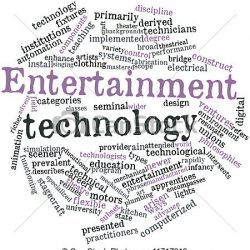Digital Technology Education and its Impact on Traditional Academic Roles and Practice
Author: Jennifer Sappey Dr
Stephen Relf
Summary: In this paper the author explored the interface between digital technologies and the teaching labour process in Australian higher education. They developed an adaptation of the seminal Clark (1983, 1994, 2001) and Kozma (1991, 1994) debate about whether technology merely delivers educational content unchanged. They wrote on the implementation of new educational technologies, the human resource management aspects of job design, motivation, skills and work identity that often overlooked, with critical debate about the impact on the teaching labour process seldom considered.
The objective of this article is very interesting and highly informative. Technology now has a great impact in our education as we have the e-readers, blackboard, etc.
In a critical review of blended learning, the Authors pointed out different definitions to the term ‘Pedagogy’.
Oliver and Tigwell (2005) describe twelve definitions ranging from a blend of media to a blend of pedagogy, which Graham (2006) described as a positioning of the Clark – Kozma debate. Blending media has been influenced by statements such as Laurillard’s description of media in terms of their pedagogical position within her conversational framework pedagogy (cited in Oliver and Tigwell, 2005, p.19), while blending pedagogues proposes combining constructivism, behaviourism and cognitivism to optimise learning outcomes (Oliver and Tigwell, 2005, p.18). Stacey and Gerbic’s (2009) review of blended learning describes the predominant combination of face-to-face and online learning. Macdonald (2006) provides a brief description of blended learning across a face-to-face and distance cohort that would account for the practice in our institution that we call ‘Tutorial Mode’ in which on-campus students receive the distance education materials and have only face-to-face tutorial contact with academic staff. However, in this model the enrolment cohorts are taught separately and frequently by different academics. Our application of blended learning, from which we have developed our delivery truck driver model of blended learning, is more radical in which the on-campus and distance education students together form one class receiving the same enriched learning environment (pedagogy).
In my view, the research done was important and original, there was a lot of background information sourced out, which made the article very informative, though in my point of view I think the level of background history or research was a little too much in the article. The research was done qualitatively, due to its descriptive nature.
As an issue of the teaching labour process, their study also provides evidence that ‘none … set out to manage the change focus in a way that significantly addressed the concerns of these academic staff or business stakeholders. Flexibility of delivery provides a means of replacing labour or ongoing costs with ICT technology through the redesign of the teaching process. The authors also wrote that blended learning significantly changes the traditional academic tasks to be done, how they are to be done and alters the control of parties involved in those processes, it can therefore be construed that as a form of flexible delivery, blended learning is a new, particular form of work organisation for teaching academics. The convergence of all these facets leads us to define blended learning as pedagogy, a business strategy and marketing tool, and a teaching labour process. Although blended learning means different things to different stakeholders in higher education, it is this last dimension, the academic needs to acknowledge the active not passive role of the academic teacher in blended learning and the use of ICT, which was the focus of this article.
The implication of taking such a focus as noted in the article is to restore balance between the teaching labour process and the now dominant student learning focus.

